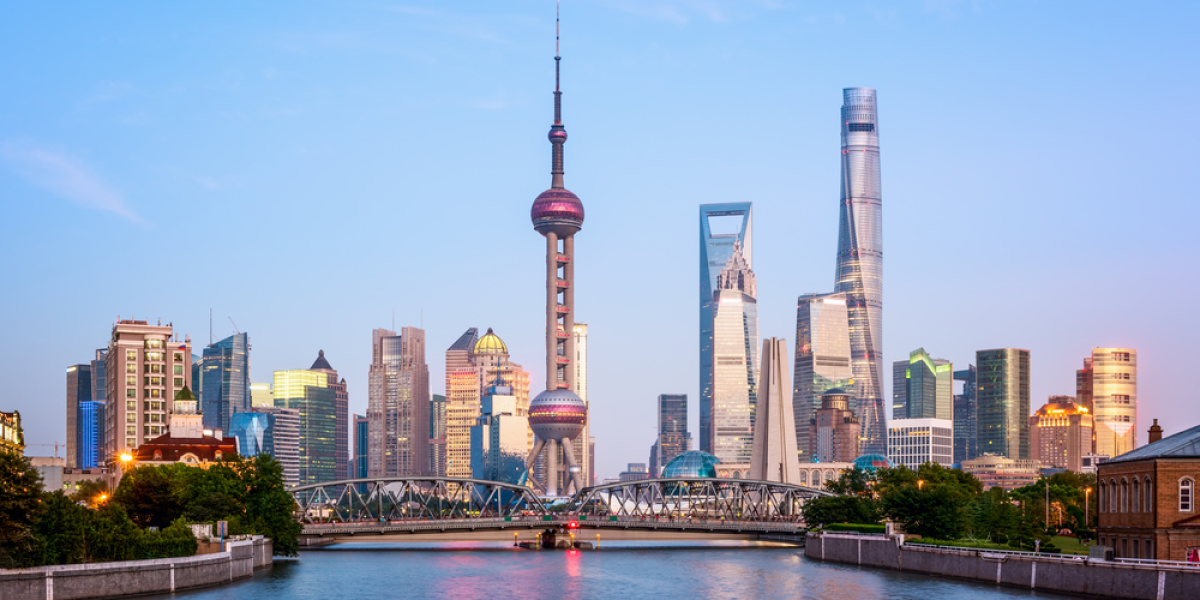
Moving abroad can be a real challenge depending on your next destination. Whatever the reason behind your move is – whether you're looking for a new career or business prospects, or simply for better living standards – the world's fastest growing cities can be good options to consider. Expat.com gives you an insight into the most promising cities according to the Global Cities 2030 Study by Oxford Economics.
The study takes into account existing opportunities and forthcoming trends in the world's 750 biggest cities, and provides an estimate of their potential by 2030. Their populations are expected to reach 2.8 billion people in coming years – that is 35% of the world's population. With a Gross Domestic Product (GDP) of US$ 80 trillion, these cities should account for 61% of the global GDP. Also, high-income households are expected to reach 200 million households (35% globally) and consumer's spending is also likely to increase to $ 40 trillion (61% of global consumer's spending) by 2030.
Economic and demographic growth

Emerging markets such as BRICs – Brazil, India and China in particular – have shown considerable progress over the past few years especially due to rapid economic growth and a decline in poverty. On the other hand, many global cities also seem to have recovered from the financial crisis which makes them ideal cities for work or investment. In fact, these cities are considered as the pillars of the world's economic powerhouses with industry, services and innovation as the primary contributors.
Accounting for 57% of today's global GDP thanks to an increase in consumer's spending, these 750 cities also attract a skilled and diverse workforce. But which of the world's fastest growing cities should you turn to if you are looking for new opportunities? Tokyo has the highest potential with a GDP estimated at 2,380 billion US dollars in 2030, followed by New York, including Newark and the city of Jersey whose GDP is expected to reach 2,225 billion.
If you're rather looking to move to Europe, London and Paris are expected to be the fastest growing cities. Many Asian cities such as Shanghai, Osaka, Beijing, Tianjin, Guangzhou and Guangdong have also shown significant progress since the past few years. The report points out that Chinese cities such as Chengdu, Wuhan and Hangzhou are also likely to shine in the coming years, while Sao Paulo can become Latin America's biggest economic hub.
Economic growth also implies demographic growth. By 2030, these 750 global cities are expected to host an additional 410 million inhabitants. Jakarta, for instance, could become the world's most densely populated city with some 37 million inhabitants followed by Tokyo (36.3 million), Chongqing (32.6 million), Shanghai (29.2 million) and Beijing ($ 28.5 million). In America, the highest demographic growth is expected in Mexico City, Dallas, Lima and Buenos Aires.
Consumer spending on the rise

Economic and demographic growth also means higher income and bigger spending power. Again, China stands out from other emerging markets. Income variations for urban households is expected to go up from two to six times higher than in North American and Latin American cities. By 2030, China will host around 45 million urban households having an annual income of over US $ 70,000. Shanghai will thus be ahead of many European and North American cities in terms of high-income households.
China is also considered to be the biggest consumer spending market with expenditures rising from US$ 2.8 billion to US$ 9.6 billion in 2030 – food, non-alcoholic beverages and telecommunications being the main products and services used. However, consumers' spending patterns vary considerably from one city to another. Tokyo, for example, will be the largest consumer market for housing, eating out and leisure, while London has the largest urban consumer market for clothing. The average people in Hong Kong are also likely to spend more in eating at the restaurant. Sao Paulo, for its part, is estimated to be the the world's 4th consumer market for cars.
New opportunities

Ageing populations will also be the main concern for many cities around the world, including China. The number of people over 65 in these cities is expected to reach an additional 150 million. In some countries, retirees enjoy many financial benefits that allow them high standards of living, which can be a great potential for developing new services. On the other hand, many countries are finding it difficult to fulfill consumer market demands due to the lack of workforce resulting from ageing populations.
While Chinese metropolises are likely to remain the world's biggest industrial hubs even though significant changes are expected, other cities such as Tokyo, Osaka, Seoul, Taipei, and even Bangkok and Shanghai seem to have opted for deindustrialisation. Shortage of labour, risings costs, as well as the growth of financial and business services are only some of the reasons explaining this. At the same time, other major Asian cities such as Jakartan, Hanoi, New Delhi and Chongqing can take over even if some of them heavily rely on natural resources. Cities like Ho Chi Minh can also set the pace thanks to improved education, developing infrastructure and its attractive business climate.
From a broader perspective, the report suggests that major Chinese and Indian cities, with Beijing topping the list, are likely to provide for 25 million jobs in financial and commercial services in the coming years although many American and European cities will remain the world leaders. The fastest growing cities altogether have the potential for creating 240 million additional jobs overall with 60 million jobs in the industry alone – which can be a great deal for international professionals and entrepreneurs looking for new opportunities.
Sources:



















